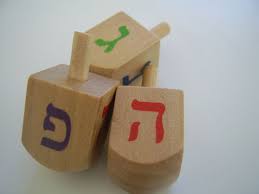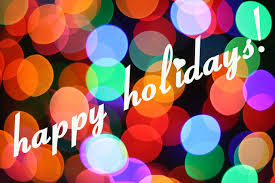Are you making a list (and checking it twice) of family activities over winter break? At talkSTEM, we’re all about creating experiences and sharing activities that bring together families and communities through the magic of STEM.
While we certainly enjoy a fun holiday craft or winter-themed STEM experiment, we also know you have a lot on your plates as parents. Sometimes, adding a whole bunch of extra supplies to your shopping list just isn’t practical! We believe in the power of experiential, real-world learning opportunities, and hope this list of low-cost or free holiday STEM ideas inspires you and your children this season.
Keep it Green this Holiday Season
Turn gift
wrapping
into a
STEM
Challenge!
- Have your children calculate the surface area of each gift they are wrapping. You may have them visually estimate before calculating the area. Ask them to try to use the least possible amount of gift wrap for each gift. You can also encourage them to reuse materials by finding alternatives to traditional wrapping paper (newspaper, packing paper, old magazines, etc.. ) around the house.
- Guiding questions include:
- How did your visual estimate compare to the actual area?
- How can you use the least possible amount of gift wrap to hide your gift?
- It takes a LOT of water and energy to produce paper. Based on the surface areas you calculated, what materials could you reuse to wrap gifts instead of buying new gift wrap?
Dreidel STEM!


The Hanukkah tradition of playing with a dreidel is full of opportunities for STEM thinking and learning!
- Ask your children to think about the physics of what makes a dreidel spin! What makes it go faster? Slower? What surfaces work best for spinning it? You can also have them design their own dreidel using the instructions here.
- As your children play a game of dreidel, encourage them to think about the fractions involved in the game. For example, if playing with coins, ask your children, “What fraction of the pot was passed to _______ when he/she landed on Hey?”
Track those Holiday Eats!
- Everyone loves holiday treats and family gatherings over. Sometimes it’s easy to lose track of leftovers or extra treats, resulting in food waste. Ask your children to help reduce waste by menu planning and adjusting recipes based on serving sizes. They can even create new recipes with leftovers!
- Guiding questions include:
- Calculate how many ______(cups, tablespoons, ounces, etc.) you need of _______ (ingredient) if you halved this recipe.
- How can you repurpose these leftovers to create a new meal?
Budget-friendly Holiday Shopping!
- Sticking to a budget not only saves money; it also prevents us from buying items we may not actually use. Work with your children to help them plan their holiday shopping. Have them create a budget for holiday shopping and check in with them regularly.
- Guiding questions include:
- How did you determine your budget? For example, did you research the cost of items first or just estimate why you think you might spend?
- How could you come in under budget? Are any of the items on your list available second-hand? What kinds of gifts might you give that don’t cost any money (e.g. a home chores “coupon” book, self-made artwork, etc.)?
Shapes, sizes and more – oh my!
- Make measurement relevant! Have your children give a visual estimate of how tall they think your Christmas tree is. Measure it (safely, of course!) and ask your children to compare their estimate to the actual size. You can ask younger children to identify different shapes on trees and ornaments using our handy Shapefinder tool, included with your copy of Goodnight Dallas, walkSTEM® Edition
- Guiding questions include:
- How might you estimate the size of our tree? How tall do you think it is? What about the circumference at different points along the tree? Why did you make your estimates?
- How do your estimates compare to the actual size of the tree?
- What about the ornaments? Visually estimate how many are on the tree, then count them. How did your estimate compare to the actual amount?
- Do you see any wreaths in our house? Estimate and calculate the circumferenc of each, then compare!
- What questions do you have about the history of Christmas trees? What ideas do you have for making the Christmas tree industry more sustainable?
Santa Claus and STEM!
When will Santa arrive?
- Use data from the Norad Santa Tracker to calculate how fast Santa Claus is traveling. Look at a globe or map and encourage your children to use a world clock app to figure out when Santa might be in different parts of the world.
- Guiding questions include:
- What do you think the most efficient method for Santa to travel around the world might be? Why? Show me on a map.
- If Santa only travels at night, what countries (or states if you are just focusing on a U.S. map) will he need to travel to first? Hint: look at your time zone map.
Will Santa have enough light?
- Have your children create a moon journal by observing the moon each day in December and recording their observations and questions. Ask them to predict the phase of the moon on Christmas Eve.
- Guiding questions include:
- Do you think Santa will have enough light to travel based on your moon phase prediction? Why or why not?
- How did the moon change each night you observed it? Was there more or less light? Why?
Christmas Advent Countdown: Create your own!
- Create an advent calendar with your children and help them explore fractions by expressing days left until Christmas fractionally (½ to Christmas, ¼ of the way to Christmas, etc.
- Guiding questions include:
- On December ______ (any day before the 24th), how many days left until Christmas? How would you express this as a fraction?
STEM in the New Year
REALLY
Big
Numbers
on New
Year’s
Eve
- Did you know the NYE “ball” in New York City’s Times Square weighs approximately 12,000 pounds? That’s REALLY big. Work with your children to do some research on the history of New Year’s Eve celebrations around the world, and see what other really big numbers they discover!
- Guiding questions include:
- Convert 12,000 pounds to tons (answer: 6 tons). What else weighs about as much as the NYE Times Square ball?
- From NYE History site: “The Ball is illuminated by 32,256 LEDs (light emitting diodes). Each LED module contains 48 LEDs — 12 red, 12 blue, 12 green, and 12 white.” What is the total number of each color? What strategies could you use to determine the answer? ( Answer: total of 8,064 of each color- that’s a LOT of light!)
- Think: What do these really big numbers tell you about our emotional connection to New Year’s? How does STEM help us celebrate events we care about?
- Extend: The Times Square Ball is a geodesic sphere. Its design is great for distributing and supporting its massive weight. If you’re interested in learning more about geodesic spheres/domes click here. Learn how to create your own here.








Add comment